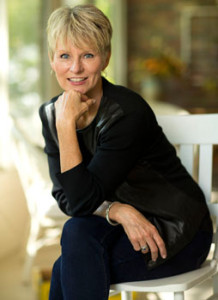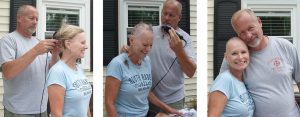On Story telling
Judy Pearson
 I am a story teller. As a kid, I wrote poems, songs, and short stories in a tree. Literally. I sat on a perfect branch in a great old maple in my parents’ backyard, pouring out my teenage angst.
I am a story teller. As a kid, I wrote poems, songs, and short stories in a tree. Literally. I sat on a perfect branch in a great old maple in my parents’ backyard, pouring out my teenage angst.
When I decided to write full time, the plan was to become the next great American novelist. Others had the same plan, so two completed manuscripts never saw daylight. Instead, I wrote magazine, newspaper and online articles. Doing some research, I visited a World War II antique store.
The excited owner showed me a collection of yellowing newspaper articles, along with a veteran’s personal effects. His story was so moving and unknown, it became my first biography, Belly of the Beast. He was a young navy corpsman who was one of America’s first Pacific Theatre POWs at the start of the war.
Thank you universe, I get it. My story telling skills should be focused on biography (my agent suggested the same thing, but the universe had a louder voice). Just as the first had, my second book’s subject fell into my lap as well. The Wolves at the Door is Virginia Hall’s story, and the first book to be written about her.
An American, she was the architect of the Resistance in central France during WWII and went on to become one of the first CIA agents after the war. A scene of her powerful story (did I mention she also had a wooden leg?) was painted for the CIA’s fine arts collection. AND the book was purchased for a movie.
Here’s where my story meanders. I tried writing a book about women’s courage, a worthy subject, but I couldn’t quite package it. After a diagnosis of cancer, I tried a book about survivorship. And again, I couldn’t hit the sweet spot. Oh wait, I’m a story teller. Find a story, Judy.
Again, the universe intervened. I was introduced to a woman who was a founding member of the cancer survivorship organization that changed the way humans view life after a diagnosis.
That chance meeting became my next book, to debut on March 2, 2021. From Shadows to Life is a biography of the Cancer Survivorship Movement. Unlike the first two, this book tells the stories of a handful of individuals, following them from the depths of their disease to the pinnacle of social change. It took nearly three years to write, and the portrait it paints is meaningful to anyone ever touched by cancer (which is pretty much everyone).

Guess what happened next? In researching From Shadows to Life, I came across a woman who is the star of the next biography. She was once called “the fairy godmother of medical research,” and that was enough to hook this story teller.
I’ve learned a number of lessons since sitting in that maple tree, the first being that I’m also a research geek. I love it! Put me in libraries, museums or archives (for The Wolves at the Door that included the American, British and French national archives) and I’ll forget to eat for days. The only time my mind wanders is to look at the other researchers and wonder why they’re there. Then back to the bounty of documents spread before me.
The second lesson was the realization that each of us is the sun of our own solar system. Those with whom we interact are the orbiting planets, helping to shape us into the human beings we become. Constructing a biography is similar to that analogy. True, its purpose is to tell the story of a life. But it must also include that life’s entire solar system.
Throwing in another analogy, my work then becomes a jigsaw puzzle. Here are two pieces that fit together. But this third one doesn’t. I never toss it, because I am bound to find where it goes. My love of research is so metastatic that my agent has had to tell me on more than one occasion, “Stop researching and start writing!”
A third lesson came about as a result of a temper tantrum. I’m frequently interviewed about women in intelligence. One day, an interviewer asked my opinion about the movie to be made from the “new” Virginia Hall book. What? How could anyone else possibly write about my subject? After all, hadn’t I made her into the star she is today? Furthermore, the “new” book’s subtitle proclaimed it was the “untold story.” I ranted. I railed. I ate donuts.
And then I realized what would always make my book a stand out. Much of my research happened in France. I’m fluent in French so was able to comprehend all of their archival documents. I traveled in Virginia’s wartime footprints and interviewed elderly men who had worked with her, and are surely now deceased. While there might be another book and movie about Virginia (my movie has yet to be made … heavy sigh), the more people hear about the them, the more they buy mine. So much so, it became a #1 best seller without me even trying. I dried my tears and threw away the donuts.
Along with the lessons, there are two morals to this story. First, long live biography: there are a million great stories waiting to be told. The second comes from the very wise Oscar Wilde: “Imitation is the sincerest form of flattery that mediocrity can pay to greatness.” Imitation also garners large royalty checks.
Category: On Writing























